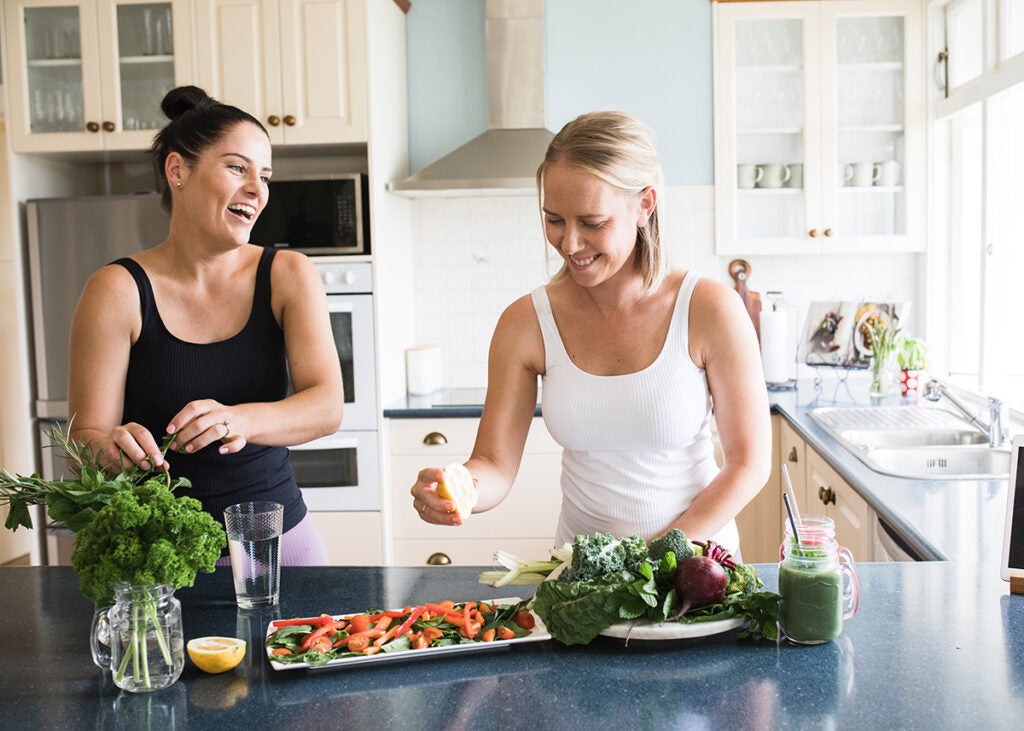Healthy Food Alternatives for Better Nutrition

Healthy Food Alternatives for Better Nutrition

Trying to make your diet healthier, but don’t know where to start? Just a few easy food swaps can give your diet a nutrition boost.
Many of us make that promise to ourselves in January, but by about March we find our old eating habits sneaking back up on us. Maybe you tried to tackle too much – or maybe you hadn't really thought about what 'eating right' really means. Eating right involves more than just making the right food choices – it's also about eating the right foods at the right time. So here are seven tips to help you to 'eat right.'
1. Protein shake instead of bowl of cereal
A bowl of cereal with milk is quick and easy, but you can pack a lot more nutrition into an equally easy-to-make protein shake.
Why it’s better: A protein shake made with protein powder, milk or soya milk and fruit, will give you more protein, which gives your meal more staying power, and the fruit adds vitamins, minerals and filling fibre. And, since you’ll be drinking the milk – rather than leaving it at the bottom of the cereal bowl – you’ll get a good dose of calcium, too.
2. Plain yogurt and fruit instead of pre-mixed yogurt
Pre-mixed fruit yogurt has very little fruit, and often a lot of sugar. It really doesn’t take that long to slice some fresh fruit into plain fat-free yogurt and drizzle with a little honey or maple syrup. Or, zap some frozen fruit in the microwave for a minute or two, then stir in your yogurt.
Why it’s better: You’ll be getting more fruit (and more fibre), more protein and less sugar.
3. Spinach salad instead of iceberg lettuce
Leafy greens are great, but some – like spinach – are nutrition superstars. Instead of lettuce, try making salads with mild baby spinach.
Why it’s better: A serving of spinach has three times more potassium, calcium and vitamin C, and 50 % more vitamin A than a serving of iceberg lettuce.
4. Beans instead of rice or pasta
Starchy sides of white rice or regular pasta don’t pack the vitamins, minerals and fibre that whole grains do. While brown rice or whole grain noodles would be better, a serving of beans offers up even more nutrition.
Why it’s better: Swapping in beans for a side of rice or pasta means you’ll get more iron and more protein.
5. Edamame soybeans instead of crisps
When you’re craving something savoury for a snack, try some edamame soybeans instead of salty crisps. Look for bags of frozen edamame in the pod at your grocery store – after a five-minute dip in boiling water, they’re ready to eat.
Why it’s better: A half-cup of shelled edamame soybeans (an amount about the size of a tennis ball) has about 9 g of fibre, 11 g of protein, and around 10 % of your daily needs for vitamin C and iron – all for about 120 calories. Show me a crisp that can do that! Also, it takes time to remove the beans from the pods, which slows down the rate at which you eat.
6. Canned salmon instead of canned tuna
Don’t get me wrong – canned tuna is a great food, and certainly one of the easiest ways to work more fish into your diet. But canned salmon (which works well in most recipes calling for tuna) has the nutritional advantage since it contains more healthy fat.
Why it’s better: Wild-caught salmon (and nearly all canned salmon is wild) contains a higher proportion of omega-3 fatty acids compared to farmed salmon. Being a fattier fish, a serving of salmon has about twice the omega-3 fatty acids of a serving of tuna.
7. Avocado instead of mayonnaise or other fats
Avocado can be a great substitute for less healthy fats in all kinds of dishes. One of my favourite ways to use it is to replace the mayonnaise used in tuna (or salmon!) salad. Mashed avocado can replace fatty dressings and sauces – it makes a great dip for raw veggies, and it’s wonderful on grilled fish or chicken.
Why it’s better: Avocado is a good source of monounsaturated fatty acids – similar to what’s found in other healthy fats like olive oil and nuts.
8. Berries instead of orange juice
If you’re trying to work more fruit into your diet, whole fruit is the way to go. The calories in fruit juice can add up quickly, and juice just doesn’t fill you up.
Why it’s better: Fibre is what makes whole fruits more filling compared with fruit juice, and berries are some of the highest fibre fruits around. The 50 calories in a serving of raspberries gives you a 7 grams of fibre in return.
9. Veggie burger instead of beef
If beef burgers are a menu staple, try this food swap – go for veggie burgers made with soy protein or beans instead. When they’re crumbled on top of a salad or nestled on a whole grain bun with plenty of onion, lettuce and tomato, they’re a pretty good substitute for the real thing.
Why it’s better: You’re getting your protein from a plant source, which means a lot less fat and saturated fat than what you’d get from the ground beef.
